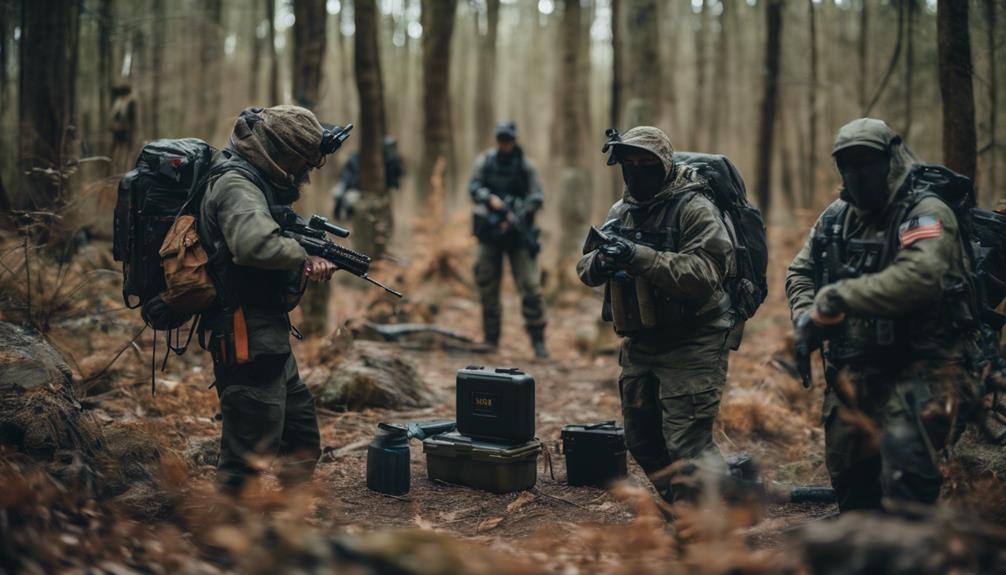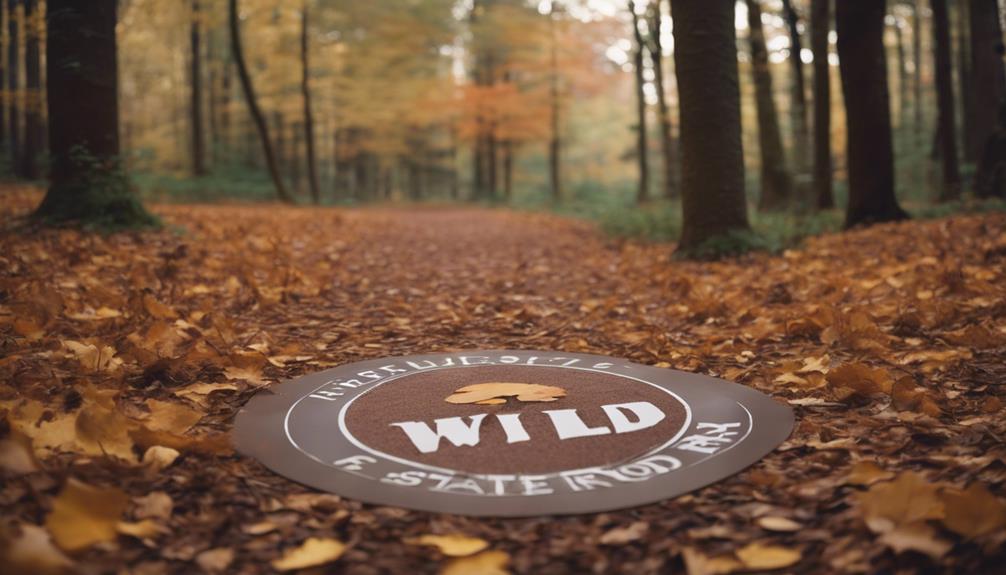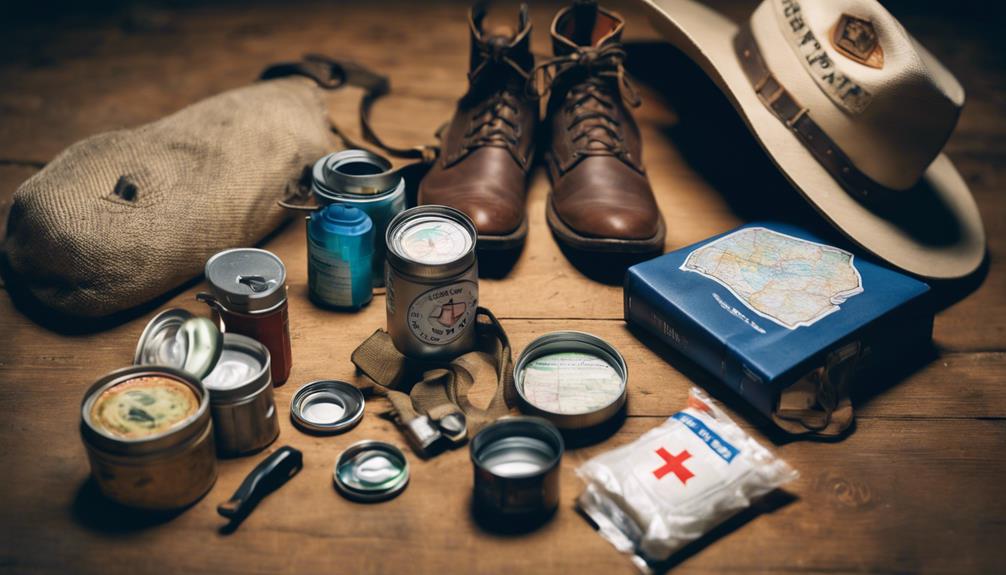Explore the world of top preppers on YouTube like Alaska Prepper and Canadian Prepper with over 300k subscribers each. Immerse yourself in self-sustainability gardening from David the Good and bushcraft from Dave Canterbury, who have 1 million subscribers. Engage with tactical content from GarandThumb's 600k subscribers. These channels emphasize self-reliance for crises. Embrace Bug-In and Bug-Out strategies for different emergencies. Community engagement and adaptability strategies are crucial. Delve into diverse viewpoints to enhance your preparedness. Seasoned preppers offer expert survival tips. Further insights from their expert advice are available in the extensive realm of prepping.
Key Takeaways
- Engage with diverse prepper channels like Dave Canterbury and GarandThumb for expert insights.
- Learn practical skills from top channels on survival, gear reviews, and self-reliance strategies.
- Explore specialized knowledge from experts like David the Good for gardening tips.
- Prioritize continuous learning from various sources like Alaska Prepper and Canadian Prepper.
- Build a comprehensive understanding of emergency preparedness from top prepper YouTube channels.
Top Prepper YouTube Channels

Discover the top prepper YouTube channels for valuable survival skills and practical advice. Alaska Prepper and Canadian Prepper, with over 300k subscribers each, offer a wealth of knowledge on emergency preparedness.
David the Good, boasting around 200k subscribers, specializes in gardening tips essential for self-sustainability.
Dave Canterbury, a bushcraft expert with over 1 million subscribers, shares indispensable skills for thriving in the wilderness.
GarandThumb, focusing on tactical content and with approximately 600k subscribers, provides insights into strategic gear usage.
These channels emphasize the importance of being self-reliant and ready for any crisis.
From learning how to grow your food to mastering essential survival techniques, these top prepper YouTube channels cater to a diverse range of prepping interests.
Whether you're a novice looking to start your preparedness journey or an experienced prepper seeking to enhance your skills, these channels offer a valuable resource for honing your emergency readiness.
Understanding Bug-In Vs. Bug-Out

When considering emergency preparedness, understanding the difference between Bug-In and Bug-Out strategies is key for effective planning and response.
A Bug-In approach involves staying at home and relying on your supplies, fortifying your residence, and being prepared to hunker down for an extended period.
On the other hand, Bug-Out means evacuating to a safer location with a 'go bag' containing essential items, a predetermined route, and a safe haven in mind.
Factors such as the proximity to danger, available resources, and the nature of the threat play vital roles in deciding whether to Bug-In or Bug-Out.
Preppers often prepare for both scenarios, adapting their plans based on the specific circumstances of a disaster.
Importance of Continuous Learning

Continuous learning is essential for expanding your prepping knowledge and evolving your preparedness techniques.
Gathering insights from various sources like experts and articles can greatly enhance your ability to adapt and overcome challenges.
Embrace a mindset of constant growth and improvement to stay ahead in your emergency preparedness journey.
Lifelong Learning Benefits
Engaging with a variety of sources, such as Preppers Youtube channels, provides you with invaluable lifelong learning benefits that enhance your preparedness knowledge.
Accessing information from seasoned survival experts like Craig Coddle and Dana Benner through these prepping channels equips you with diverse insights essential for mastering survival skills.
By incorporating this knowledge into your daily life, you cultivate a broad set of abilities that can be applied in various emergency scenarios. Adapting and customizing this information to suit your specific needs guarantees practicality and effectiveness when facing unexpected challenges.
Embracing different viewpoints from a range of experts not only expands your understanding but also fosters personal growth and resilience. Clint Eastwood's famous quote, 'adapt, improvise, and overcome,' encapsulates the essence of being flexible in your learning approach, an essential trait for both continuous education and preparedness.
Evolving Preparedness Techniques
To evolve your preparedness techniques effectively, seek out diverse sources of information that enable continuous learning and growth in your emergency readiness skills. Learning from experts in wilderness survival like Craig Coddle and Dana Benner can provide you with a full spectrum of knowledge to enhance your preparedness.
Incorporating insights from magazine articles into your daily life can help you adapt and tweak information to suit your individual needs, ensuring practical application of learned skills. Embracing different perspectives not only broadens your understanding but also fosters personal growth in your emergency preparedness strategies.
Remember Clint Eastwood's famous quote, 'adapt, improvise, and overcome,' highlighting the importance of flexibility in evolving your preparedness techniques. By approaching preparedness with a combination of knowledge, hands-on practice, and good old-fashioned common sense, you can be better equipped to handle whatever challenges may come your way.
Community Engagement Strategies

Enhancing preparedness efforts involves actively engaging with the emergency management community. By fostering strong relationships with key stakeholders, such as government officials and local organizations, you can effectively promote community resilience and preparedness initiatives.
Sharing essential preparedness information with local communities is necessary to raise awareness and guarantee that residents are well-informed in times of crisis.
Organizing educational sessions, training events, and workshops for community members can empower individuals with the necessary skills and knowledge to respond effectively to emergencies.
Building trust and collaboration with government officials is crucial for enhancing emergency response coordination and fostering a cohesive approach to disaster management.
Through community engagement strategies, you can create a network of support that strengthens overall preparedness efforts. By working together and promoting a culture of preparedness, you can help ensure that your community is better equipped to handle various challenges and emergencies that may arise.
Mindset of Adaptability and Resourcefulness

Being adaptable and resourceful is fundamental in the mindset of preppers as they prepare for emergencies. Preppers recognize the significance of adaptability in swiftly responding to unforeseen challenges that may arise during a crisis.
By being flexible and open to new solutions, they can make the most of limited resources available to them. Resourcefulness plays a vital role in the prepping community, as it involves effectively utilizing the materials and skills at hand to guarantee survival in emergency situations.
Preppers prioritize the ability to adjust quickly to changing circumstances, enabling them to tackle various challenges effectively. Essentially, being an emergency manager in the prepping world requires a combination of adaptability and resourcefulness to navigate through unpredictable scenarios.
Diverse Perspectives on Prepping

Prepping YouTube channels present a wide range of viewpoints on emergency preparedness, offering insights into survival skills, gear reviews, gardening, and tactical training. When exploring these channels, you'll encounter diverse perspectives that can enrich your understanding of prepping.
Here are some key points to take into account:
- Geographical Variety: Channels like Alaska Prepper, Canadian Prepper, and David the Good provide unique insights into prepping from different locations, showcasing how preparedness can vary based on geography.
- Skill Specialization: By following various prepper channels, you can learn a wide array of skills, from wilderness survival techniques to urban preparedness strategies, catering to different interests and needs.
- Urban Focus: The Urban Prepper stands out for its practical advice tailored to urban dwellers, offering a realistic approach to enhancing emergency readiness in urban settings.
- Comprehensive Understanding: Engaging with a mix of prepping channels allows you to build a holistic understanding of preparedness, encompassing various strategies, techniques, and gear recommendations.
Strategies for Emergency Situations

Consider the Bug-In vs. Bug-Out debate when planning for emergency situations to make well-informed decisions.
Having a 'go bag' and a well-stocked pantry is essential for various scenarios. Prioritize functionality over appearance, especially in the Greyman scenario, to navigate emergencies effectively.
Tailor bug-in or bug-out strategies according to your specific situation for best preparedness. Make sure you're equipped with first aid supplies in your emergency kit to handle medical emergencies.
Additionally, having a ham radio can be a valuable communication tool when other methods fail. Invest in quality equipment and gear that's durable and reliable, as they're vital during emergencies.
Stay adaptable and flexible by incorporating diverse perspectives and strategies into your emergency planning. Remember, being prepared is key, so take the time to assess your unique needs and plan accordingly for a variety of potential emergency situations.
Expert Insights and Knowledge Sharing

Top prepper YouTube channels are a goldmine of expert tips for survival and knowledge-sharing strategies. These channels cover a wide array of topics, including survival skills, emergency planning, gear reviews, and self-reliance.
Expert Tips for Survival
Explore valuable survival tips and insights shared by experts on prepper YouTube channels, enhancing your preparedness for unforeseen situations. Expert preppers offer a wealth of good information to help you navigate challenging scenarios effectively.
Here are some key expert tips for survival:
- Gear Recommendations: Expert preppers on YouTube channels provide guidance on essential gear for different survival situations, helping you choose the right tools to enhance your preparedness.
- Practical Skills Development: Learn practical skills such as fire-starting techniques, shelter building, water purification, and navigation from experienced preppers to increase your self-reliance in emergencies.
- Emergency Preparedness Strategies: Gain insights into creating emergency plans, establishing communication protocols, and stockpiling essential supplies to make sure you're ready for unexpected events.
- Bushcraft and Wilderness Survival: Explore expert tips on bushcraft, wilderness survival, foraging, and hunting to equip yourself with valuable knowledge for thriving in the great outdoors.
Knowledge Sharing Strategies
To enhance your understanding of expert insights and knowledge sharing in the prepping community, consider the various strategies employed by seasoned preppers like Jim Cobb. These strategies include community partnerships, video content creation, and local initiatives. By collaborating with others in the community, preppers like Jim Cobb can reach a wider audience and share their expertise effectively. In addition, participating in events like the preppers convention community allows experts to network, exchange ideas, and stay updated on the latest survival techniques and gear. These gatherings foster an environment where knowledge is shared not just through formal presentations, but through informal conversations and hands-on demonstrations. By engaging with the preppers convention community, seasoned professionals like Jim Cobb can continuously refine their strategies while contributing to the collective expertise of the group.
Here is a breakdown of some key knowledge sharing strategies used by experts in the prepping community:
| Strategy | Description |
|---|---|
| Community Partnerships | Collaborating with other prepping experts and organizations for knowledge sharing. |
| Video Content Creation | Creating engaging and informative videos to educate viewers on preparedness. |
| Local Initiatives | Organizing events, training sessions, and online groups to promote community preparedness. |
| Online Resources | Utilizing online platforms, books, and affiliate links for further learning. |
Frequently Asked Questions
Who Is the Best Survival Youtuber?
The best survival YouTuber is subjective. Consider your interests; urban prepping, wilderness survival, or homesteading. Find a channel like Alaska Prepper, Canadian Prepper, or Dave Canterbury that resonates with you. Happy watching!
What Is the Best Youtube Channel for Knowledge?
Looking for the best YouTube channel for prepping knowledge? Explore various channels like Canadian Prepper, Alaska Prepper, David the Good for gardening tips, Dave Canterbury for bushcraft skills, and GarandThumb for tactical content.
What Is the Most Successful Youtube Channel of All Time?
The most successful YouTube channel of all time is T-Series, an Indian music label and film production company. With over 177 million subscribers, it surpassed PewDiePie in 2019, holding the record for the most subscribers gained in a single day.
Who Are the Most Successful Youtube Content Creators?
When it comes to successful YouTube content creators, Canadian Prepper stands out with over 1.2 million subscribers. You can learn a lot from their focus on survival and preparedness. Check out their channel for valuable insights!
Conclusion
To sum up, learning from the experts on top preppers YouTube channels can provide valuable insights and knowledge for preparing for emergency situations.
By understanding bug-in vs. bug-out strategies, engaging with the prepping community, and embracing adaptability and resourcefulness, you can be better equipped to handle unforeseen challenges.
With diverse perspectives and expert insights available, continuous learning and preparation are key to being ready for any scenario.
Stay informed, stay prepared, and stay safe.










